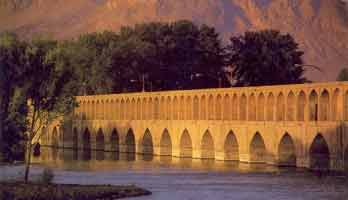|
||||||
|
Archive: Nov. 7 18 21 25 |
November 12th |
|||||
|
The city of Esfahan (Isphahan) on this day ?
November 12th ? of the year of 1598AD once again became the capital city of
Iran. Esfahan, a central city of Iran had been established the capital city of the Iranian nation by Mardaviz Ziari (Deilami) in 931 . Mardaviz from Mazanderan was a great nationalist and hero who wished to revive the Persian Empire as large as it was in the Darius era. Mardaviz expelled the Abbasids from central and western Iran including Esfahan, kashan and hamadan and selected Esfahan as his capital and observed the Sadeh Festival (burning woods , singing and dancing) in February 932 in Esfahan after almost three centuries. Seven centuries later, in the year of 1591 Shah Abbas the great decided to move the capital from Qazvin to Esfahan that was effect seven years later. In his first Nowruz ceremony in Esfahan, Shah Abbas declared Esfahan as the capital city of Iran forever and asked the foreign governments to send their emissaries there. Esfahan was not only located in the center of Iran , but it was also the major trade routes which linked Europe and Asia for centuries. Esfahan was the perfect choice for a king who wanted his empire to prosper economically. Esfahan was already an important city, but Shah Abbas set out to make it the ?jewel of the world? and began a monumental building campaign . An enormous ?maidan? or quadrangle, boulevards and buildings were established , including Alighapu and Chaharbagh (in 1601) , Bazar & Maidan Naghsh ? e ? Gihan and ?33 - pol? bridge(in 1602). He transformed Esfahan into an architectural showcase. The strategic location of Iran and Safavids animosity toward the Ottomans, who continuing threat to European Powers, generated European interest. Shah abbas received numerous European legations in Esfahan. In addition to his political reorganization and support of religious institutios, Shah Abbas also promoted commerce and the arts. The Portuguese had previously occupied Bahrain and the island of Hormoz off the Persian Gulf coast in their bid to dominate the Indian Ocean, but in 1602, Shah Abbas expelled them from Bahrain, and in 1603 from Hormoz and built the port city of Bandar Abbas which carries his name. Shah Abbas which ruled Iran from 1588 to 1629AD won back all the ceded territories and by 1623 ruled over an empire extending from the Tigris to the Indus, from Central Asia to the Black Sea, and entire the Persian Gulf. He encouraged internal and external trade by safeguarding the roads. With his encouragement, Iranian craftsmen excelled in producing fine silk and other cloths, carpets and metalwork. |
||||||
|
||||||
|
||||||
